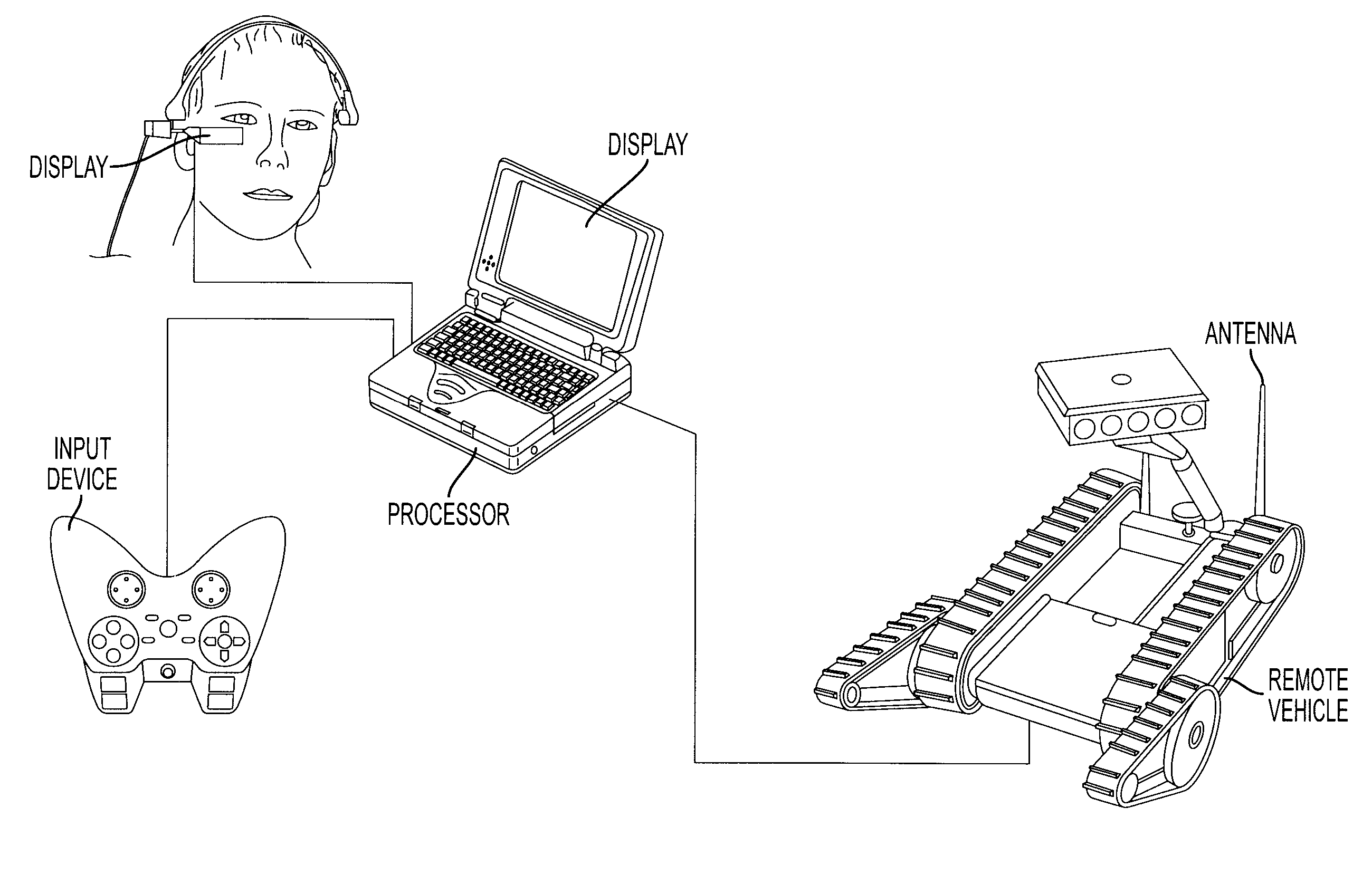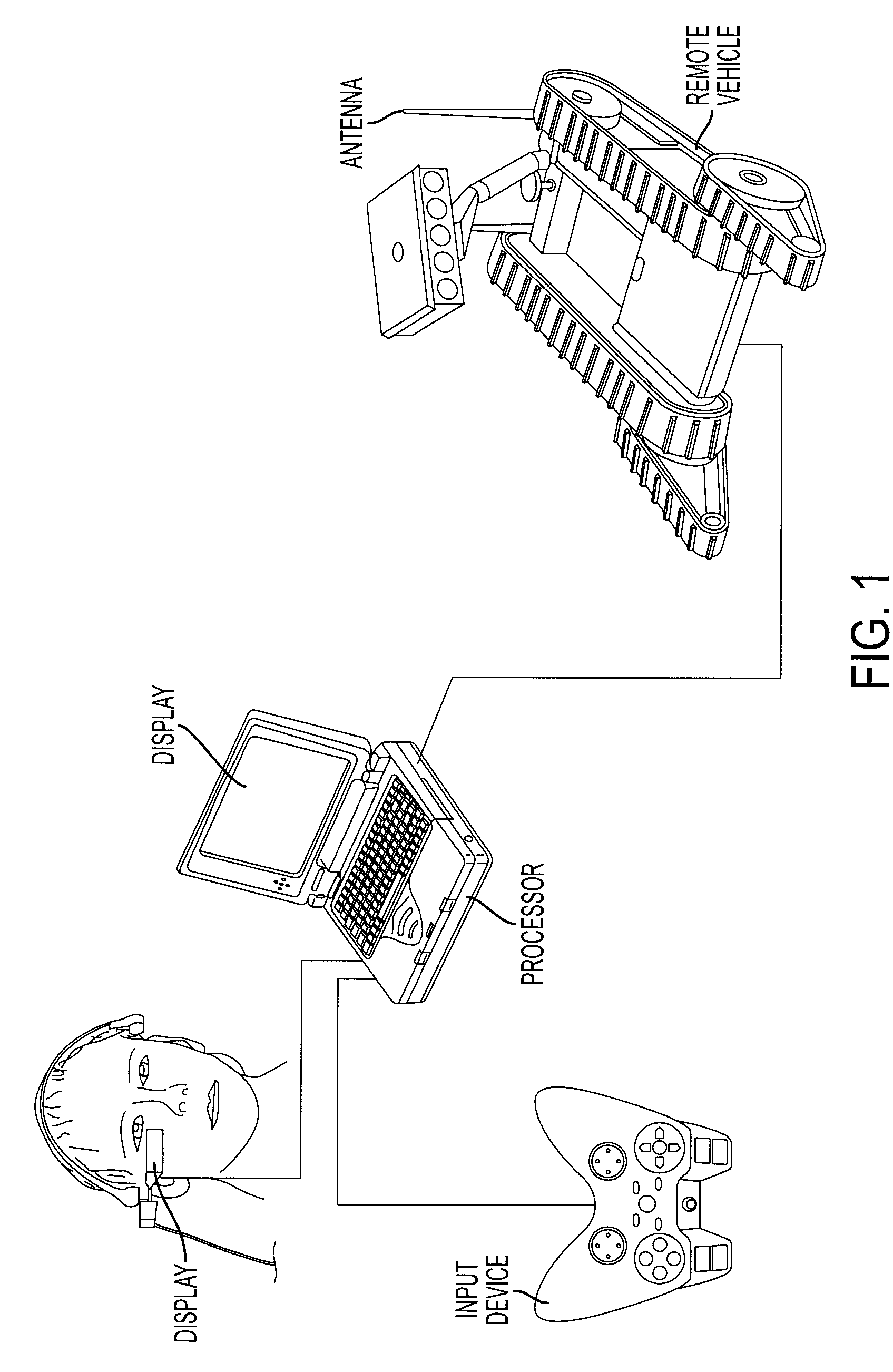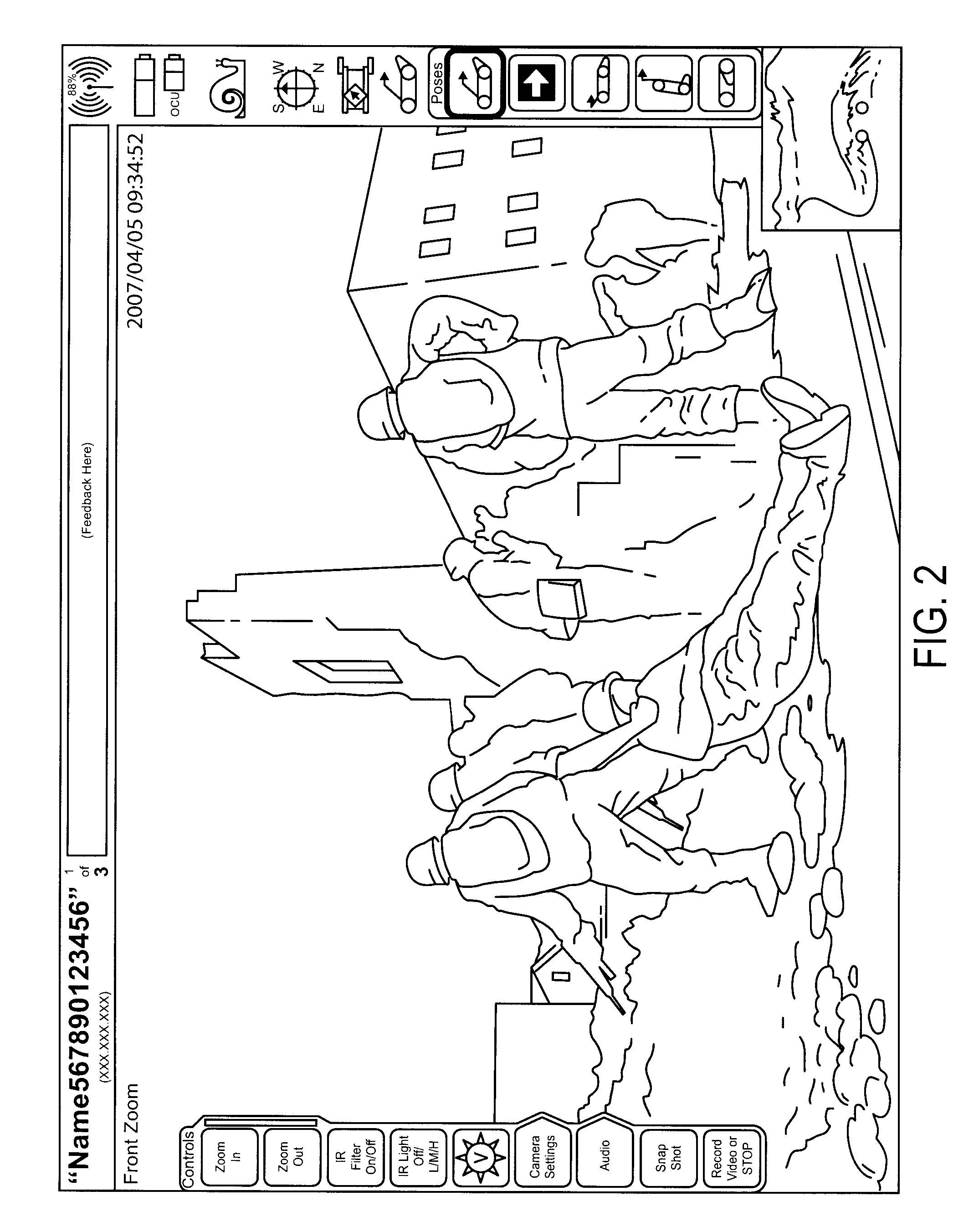Autonomous Behaviors for a Remote Vehicle
- Summary
- Abstract
- Description
- Claims
- Application Information
AI Technical Summary
Benefits of technology
Problems solved by technology
Method used
Image
Examples
Embodiment Construction
[0044]In certain embodiments of the present teachings, autonomous behaviors are implemented with a operator control unit (OCU) that is an unobtrusive, highly mobile control system providing the user with a remote vehicle operating experience that seamlessly integrates with the user's other tasks and duties. The OCU allows the user to initiate autonomous behaviors for the remote vehicle, and to switch between tele-operation and such autonomous behaviors. Basic components of an exemplary OCU, illustrated in FIG. 1, include a display, an input device, a processor, an antenna / radio (for wireless communication), and software. In an embodiment of the invention, a head-mounted display provides video display from one or more remote vehicle cameras. A hand-held controller, preferably having a twin-grip design, includes controls to drive, manipulate, and monitor the robot and its payloads. Audio may additionally be provided via the hand-held controller, the display, or dedicated listening dev...
PUM
 Login to View More
Login to View More Abstract
Description
Claims
Application Information
 Login to View More
Login to View More - R&D
- Intellectual Property
- Life Sciences
- Materials
- Tech Scout
- Unparalleled Data Quality
- Higher Quality Content
- 60% Fewer Hallucinations
Browse by: Latest US Patents, China's latest patents, Technical Efficacy Thesaurus, Application Domain, Technology Topic, Popular Technical Reports.
© 2025 PatSnap. All rights reserved.Legal|Privacy policy|Modern Slavery Act Transparency Statement|Sitemap|About US| Contact US: help@patsnap.com



